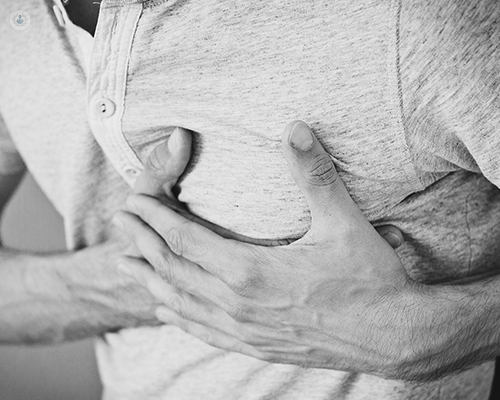Slipping rib syndrome and chest pain
Escrito por:Slipping rib syndrome, also known as rib subluxation or clicking rib syndrome, is a condition that occurs when the cartilage of the lower ribs slips out of place, causing pain and discomfort. This condition is more common than often realised and can be misdiagnosed due to its overlapping symptoms with other chest-related issues. Understanding slipping rib syndrome is important for ensuring effective management and relief from symptoms.

What are the symptoms of slipping rib syndrome?
Slipping rib syndrome typically presents with several noticeable symptoms:
Chest or upper abdominal pain: The most common symptom is sharp or aching pain in the lower chest or upper abdomen. This pain may be exacerbated by movements such as bending, lifting or twisting.
Clicking or popping sensation: Many individuals report a clicking or popping feeling when the rib moves out of place. This can occur during physical activities or even simple movements like coughing or deep breathing.
Tenderness or swelling: The affected area may be tender to the touch and could be accompanied by slight swelling.
Pain radiating to the back or side: In some cases, the discomfort can radiate to the back or side, making it difficult to pinpoint the exact source of pain.
Worsening pain with movement: Activities that require the upper body to twist or stretch can increase the intensity of pain, as they put more pressure on the affected ribs.
How is slipping rib syndrome diagnosed?
Diagnosing slipping rib syndrome can be challenging, as its symptoms often mimic other conditions such as costochondritis, cardiac issues or gastrointestinal disorders. It involves a detailed medical history and physical examination. During the physical examination, a healthcare provider may:
Apply pressure to the affected area: The physician may perform a hooking manoeuvre, where fingers are used to gently press under the ribcage. If this triggers the clicking sensation or pain, it is often indicative of slipping rib syndrome.
Order imaging tests: While X-rays may not always show rib subluxation, more detailed imaging such as ultrasound or MRI can help rule out other conditions and sometimes provide a clearer picture of cartilage or rib movement.
How is slipping rib syndrome treated?
Slipping rib syndrome treatment varies depending on symptom severity:
Conservative treatment: For many patients, non-surgical approaches provide relief. These include rest, activity modification, and avoidance of movements that aggravate symptoms. Applying ice or heat packs to the affected area can also help reduce pain and inflammation.
Pain management: Over-the-counter pain relievers, such as ibuprofen or acetaminophen, may be recommended to manage pain. In some cases, a doctor might prescribe stronger medication or muscle relaxants if the pain is significant.
Physical therapy: Specific exercises and stretches can strengthen the muscles around the ribcage and improve stability, which may help prevent further slipping of the rib.
Intercostal nerve block: For persistent pain, an intercostal nerve block may be performed to temporarily reduce or eliminate pain by numbing the nerves around the affected ribs.
Surgical intervention: In cases where conservative treatment fails and pain significantly impacts daily life, surgery may be considered. The surgical procedure typically involves stabilising or removing the affected rib cartilage to prevent further movement.
When should you seek medical advice?
If you experience unexplained chest or upper abdominal pain, especially if it is accompanied by a popping or clicking sensation, it is important to consult a healthcare professional. Early diagnosis can lead to more effective management and help prevent chronic pain or complications. Seeking medical advice is particularly crucial if conservative treatment does not provide sufficient relief or if the pain worsens over time.


